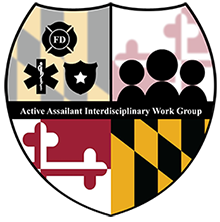Human Services
A selection of references, training, and videos have been compiled below to assist those in human services in understanding how to prevent, prepare for, and respond to an active assailant incident. Human Services professionals are encouraged to utilize these resources as a starting point for discussion and protocol development to fit their organization’s needs.
Preparedness
The AAIWG’s Emergency People Search and Recovery Subcommittee developed this Support Services for Mass Casualty Incidents: Guidance and Best Practices to identify best practices, resources, and operational considerations relevant to emergency people search and recovery activities.
https://www.naag.org/wp-content/uploads/pdfs/disaster-preparedness/Mass-Violence-Checklist-Final.pdf
This National Attorneys General Training and Research Institute document creates a checklist for state and territory attorneys general when responding to mass violence incidents.
Guidance & Best Practices
https://ovc.ojp.gov/sites/g/files/xyckuh226/files/pubs/mvt-toolkit/about-toolkit.html
The Office for Victims of Crime developed a toolkit to help communities prepare for and respond to victims of mass violence and terrorism in the most timely, effective, and compassionate manner possible. This toolkit contains materials that will aid communities’ responses to victims even if they have not planned for an incident.
This Department of Homeland Security guide is intended to assist in the proactive implementation of policies and procedures that position organizations to effectively recover from an active shooter incident, while providing the best support structure for their employees, contractors, visitors, patrons, family members, and the community at large.
Training & Exercises
https://www.ready.gov/sites/default/files/2020-07/until-help-arrives-web-tutorial.pdf
Training video and web-based training course created because life-threatening emergencies can happen fast, and emergency responders aren’t always nearby. These injuries can require immediate action to prevent an injured person from dying, so those nearest to someone are best positioned to provide first care.
https://alerrt.org/CivilianResponse
The Civilian Response to Active Shooter Events (CRASE) course, designed and built on the Avoid, Deny, Defend (ADD) strategy developed by ALERRT in 2004, provides strategies, guidance, and a proven plan for surviving an active shooter event.
One of the best ways to increase a person’s likelihood of survival when severely injured during active assailant incident is to quickly stop severe bleeding. Coworkers can provide initial life-saving measures. The Stop the Bleed® site provides resources on how to organize an in-person training, life-saving strategies and posters, instructional videos, and aid kits to place in common areas.
Survivor & Victim Assistance
https://www.nmvvrc.org/vsps-clinicians/vsp-resources/
The National Mass Violence and Victimization Recovery Center created tools specifically for readiness, response and resilience, ensuring that victim service professionals are prepared for – and can appropriately respond to – a mass violence incident.
Virtual Resiliency Center | VRC (massviolence.help)
The Virtual Resiliency Center provides resources and information to help individuals and communities recover from mass violence.

